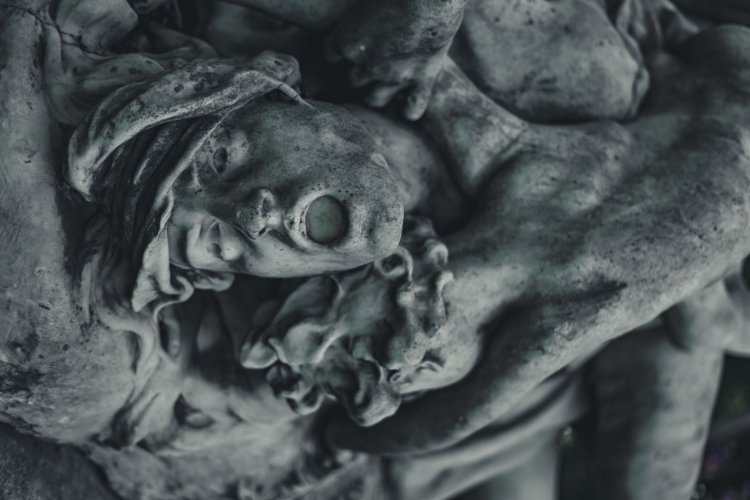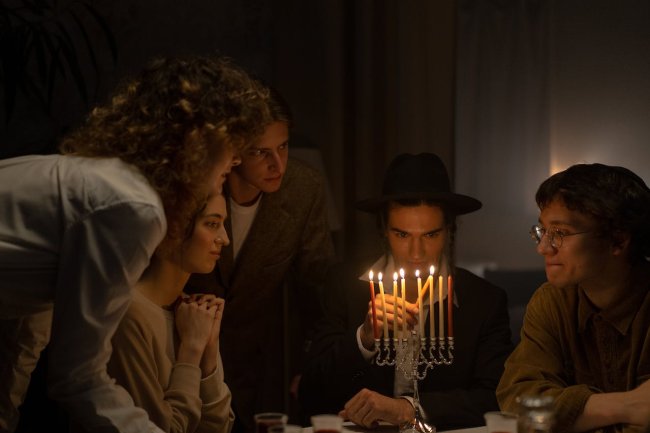Ritual of eating sins
The ancient Celtic ritual of eating sins, which researchers were blind to for ten centuries, has returned to human memory thanks to American cinema

Ritual of eating sins
The ancient Celtic ritual of eating sins, which researchers were blind to for ten centuries, has returned to human memory thanks to American cinema, which presented the most famous film, The Order, starring the late star Heath Ledger, in 2003, and the Icelandic film, The Last Sin Eater, which was personally funded by the Catholic Church.
Date September 20, 2023 0 0 Add to reading list
The ancient Celtic ritual of eating sins, which researchers were blind to for ten centuries, has returned to human memory thanks to American cinema by presenting the most famous film The Order starring the late star Heath Ledger in 2003 and the Icelandic film by presenting the film Last Sin Eater, which was personally funded by the Catholic Church.
The myth and legacy of the sin-eaters is strong and has origins rooted in human heritage, to the point that it certainly preceded the idea of (Christ the sin-bearer).
The ritual of eating sins has its roots in the moors of Scotland (the land of legends) from the Celtic heritage that controlled the region from the sixth century BC, and it remained widespread in areas far from church control in northern Europe until the ninth century AD, when Christianity began to gradually erase the ritual, but it continued in a way. Individual and documented until the eighteenth century
What is interesting about this tradition is not the rituals, it is in fact a ritual (associative magic)---where the sin-eater places a piece of bread and a lump of salt on the chest of the dying person and writes a Celtic incantation that has been transformed into Latin on his head and feet----and then begins to circle around the dying person. He blows the smoke of a fragrant plant into his mouth and inhales the air coming out of the chest of the dying person before he eats the bread and salt from the man’s chest, swallowing (as he believes) his sins and freeing him from them so that he may face the court of the other world, relieved of them.
Although the ritual is exciting for those who have not studied the methods of ancient magic, the person performing the operation is more interesting
He is a mysterious character who does this work in exchange for a large sum of money. He is not present near the community except near the death of one of the community members. Legend says that he descends to the village three days before the death of one of the individuals, and no one knows how to know how to know that sins will be consumed when the death of one of them approaches, and he waits at his door without eating or drinking. Until the family of the dying person summons him----and if they do not summon him, he covers his face and returns to where he came from. He is a character who does not speak to anyone unless he is asked. If he answers, his answers are short, truncated, and specific, and he is always worried because of the enormous amount of sins that he carries on his shoulders---and it is said that when The Sin-Eater brings him close to death, and this is of his own free will, as he is supposed to remain alive for more than 600 years. He chooses another Sin-Eater to perform the same ritual on him in an exaggerated manner. The ritual takes three days, which is very painful for both parties. And the Sin-Eater does this. The important social role based on a powerful deal with the ruler of Hell in the other world
The strange thing is that the effect of this ritual, or at least the same concept, exists and is available in all cultures
For example
Among the ancient Egyptians, until a short period of time, distributing unleavened bread to the soul of the dead and passing over his grave to the poor is a tradition that has continued to this day without its perpetrators knowing that the original was to blame those who ate unleavened bread for the sins of the dead person. Therefore, the children of the family are prohibited from eating in the cemetery, but the unleavened bread is given to others, and the children are satisfied. The family refrains from eating what is in the house for fear of being held responsible for sins
In the Torah, Aaron ordered offerings to be placed on the backs of two ewes, whichever of them fell first would be pushed with their loads into the valley of Hell, northeast of Jerusalem, to be for Azazel. It represents the sins of the children of Israel that they carry to their original source from their point of view, which is the devil Azazel.
On Eid Kippur, which is synonymous with the Great Eid for Muslims, the sacrifice is wrapped three times around the head of the family members before it is slaughtered, thus atoneting for the family for general sins. It is clear, of course, now that the three cycles are nothing but rituals that load the sacrifice with sins so that it is slaughtered instead of the family members.
In Orthodox and Catholic Christianity, there is a tradition that many do not know about, related to the Eucharist - which is another ancient Jewish ritual that was inherited. It involves laying the person to be freed from his sins lying next to the sacrifice. Then the ritual performer passes the knife over the person’s neck as if he were slaughtering him, but he touches him gently. Then he slaughters the sacrifice, and the blood should flow over it. The person to be liberated is as if the sacrifice was burdened with the sins or sins from which it is sought to be liberated
What's Your Reaction?






















